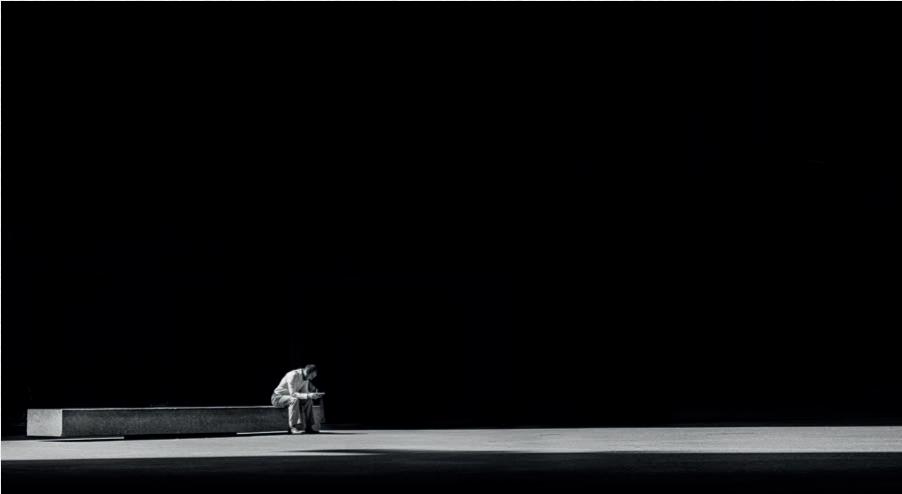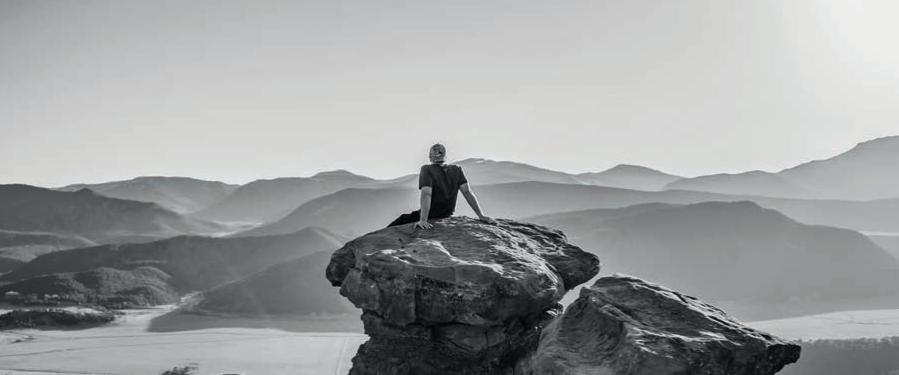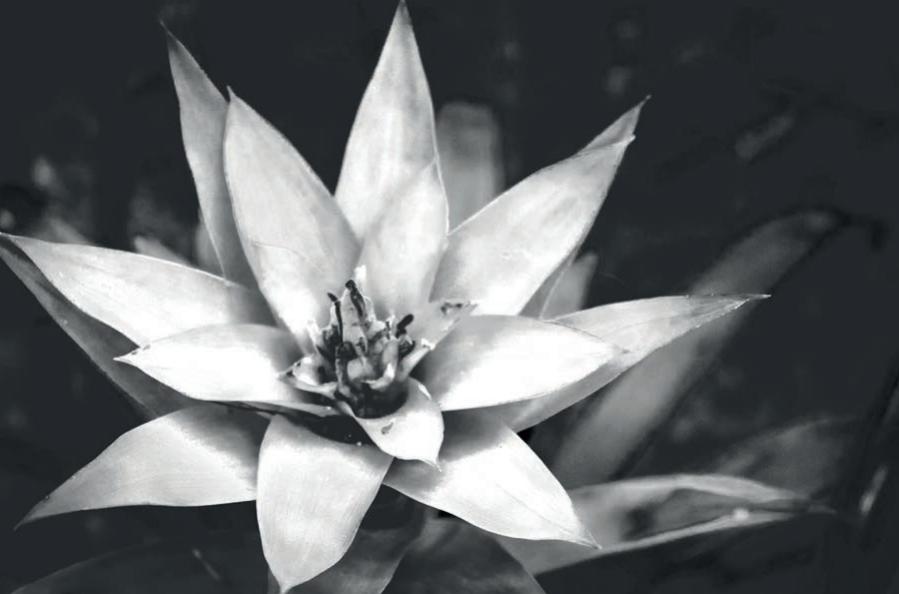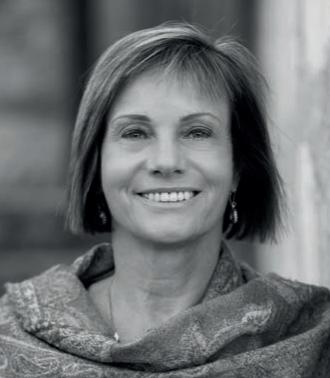
The Sisyphus in Each of Us
© 2018, Radhule Weininger, MD, PhD
In these unpredictable and perilous times many of us look aghast at the Trumpian world and right-wing movements across the globe and experience feelings of heightened anxiety, fear and even dread. As we continue to feel bombarded by news of chaos, aggression and danger, it is difficult to maintain an attitude of presence and caring. It seems all too easy to either despair, tune out, or become numb to feelings of concern for others and our world.

A 2018 study reports that teen-age suicide has risen over 30% over last few years. We have an existential crisis in our country, in which meaning and purpose are put into question. What values do we offer the young people amongst us, which make it meaningful and enticing to be part of our culture and communities? The philosopher Frederic Nietzsche told us: “He who has a why to live can bear almost any how.” Questions about meaning voiced by my young clients include: “What is the purpose and significance of my life?” “What is meaningful and valuable nowadays?” “What am I here for?” Sarah, who is 21, told me: “It seems that I am pushed to achieve more and more, just so I can buy stuff in the end.” Jose, a Dreamer, who came to the States at age four with his mother, told me: “It seems nobody wants me or my relatives here, there is no place or purpose for me.”
Sarah and Jose are experiencing a crisis of meaning. Jose feels left out and unsupported, and Sarah sees her efforts and contributions as not making sense. Another client, Tony, agonizes about the ever-increasing threat of climate change: “Why should I go to college and work, when big parts of our world may be uninhabitable in a decade or two? This is no place to have a future.” (Tony had been referred to me by his school counselor because of excess marijuana and alcohol use.) Maya, who is 24, says: “I do not want to live in a world where people don’t care for each other, where everybody is out for their own advantage.”
Meaning in life is established when we have a valuable, purposeful place in a world in which we belong and with which we are interconnected. Victor Frankl, the psychiatrist who survived the Nazi death camps, pointed out that having meaning in life allows us to fare better in times of great stress. Therefore, I ask how we can promote attitudes that help us to embrace current reality with sensitivity and aliveness, while maintaining the will to make our world a better place?
I have been looking for examples from our philosophical and spiritual past, searching for those who found a way to stay engaged in the face of adversity. Sisyphus, the Greek hero, who was condemned by the Gods to do an arduous task for eternity, came to mind almost immediately. Each day he struggled to roll a huge stone to the top of a mountain only to watch it roll back down on its own weight. Some see Sisyphus as the quintessential sufferer, condemned to repeating hopeless and meaningless toil.
The Wellspring Institute
For Neuroscience and Contemplative WisdomThe Institute is a 501c3 non-profit corporation, and it publishes the Wise Brain Bulletin. The Wellspring Institute gathers, organizes, and freely offers information and methods – supported by brain science and the contemplative disciplines – for greater happiness, love, effectiveness, and wisdom. For more information about the Institute, please go to http://www.wisebrain.org/wellspring-institute.
If you enjoy receiving the Wise Brain Bulletin, please consider making a tax-deductible donation to the Wellspring Institute. Simply visit WiseBrain.org and click on the Donate button. We thank you.
Like the mythic Sisyphus, many of us harbor suspicions that the stones we push up the mountain are bound to roll to the bottom once again. Many of us worry that our acts of engagement may be
in vain. Several of my socially or politically inclined friends worry that canvasing, participating in protests, and working in activist groups will be futile. They find that with each polarizing and meanspirited executive order, with each new law favoring the rich and powerful, they are left feeling more powerless and defeated.
One of the most well-known writers to interpret the myth of Sisyphus is the existentialist Albert Camus. Camus wrote for post-WWII Europe when there was a different yet comparable existential crisis playing itself out. People in Europe were demoralized after the devastating war and many young people were appalled by the rising economic consumerism and re-militarization. Just a few decades after the war had ended, this flight into superficiality took over. There was hardly any cultural awareness of what had happened just a few years earlier and why and how new value in life could be found.
Today we see a rise of nationalism, an intolerance toward immigrants and refugees, and an indifference towards those in our society who are the most vulnerable. Polarization splits our society, pitting one group against the other. While consumption is offered as a substitute for meaning, the problems of our feuding society can feel like huge boulder which we don’t know how to handle. Are we to be defeated by this huge boulder, which we have to roll up the mountain over and over again, or is there another way to respond to this conundrum?
Camus proposes an alternate and inspiring view of Sisyphus and his task. In The Myth of Sisyphus he sees the absurd hero as the one who defies the gods because they have abused their power. Sisyphus’ punishment for speaking out against injustice is to muscle the stone up the steep mountain over and over again, forever. In Camus’ interpretation, Sisyphus is well aware of his situation, including what led up to it as well as what his future will be. According to Camus, Sisyphus pushes his stone forward with an attitude of knowing, dignity and even joy, choosing to be present to his task. Knowing that he has no choice other than to shove the stone up the tall and steep mountain again and again, he makes the mental choice remaining to him to replace sorrow with joy
I see Sisyphus as deeply present with what is. What he chooses to do is not arbitrary or accidental, but a life affirming response to suffering.
In a holographic reality, the whole is detected within the part, as the part lives within the whole.

Sisyphus realizes that in tending to the immediate situation (perhaps his hurting back or his aching thighs), he is in fact tending to the part that helps to make up the whole. Camus writes: “…each atom of that stone, each mineral flake of that night-filled mountain, in itself forms a world.” Thus, he argues that separateness is an illusion, and that all is interconnected. This truth can be sensed in mystical experiencing. In engaging with his challenge with an expended awareness, Sisyphus moves toward an attitude of kindness and increased presence, engaging in his task (a version of which is shared by all of us) in a new way.
In the face of the tension and confusion that I detect within myself, my clients, my students, and society as a whole, I feel myself drawn to reflect on the stone and Sisyphus’ relationship to it. I keep coming back to what I hear from many people, that taking care of their own life is the best they can do. But we can and must go beyond that. We can do both, engage with the troubles of this world, and take responsibility for our individual worlds. The awareness that all is radically interconnected, that everything “inter-is,” makes a difference to how we engage. We might envision this as a feedback loop, in which an act of kindness gives us meaning, and where meaning in turn gives us the strength to engage.
I think of the many people I know, who, in the face of seemingly insurmountable obstacles, give their all to work in some small way to help the world. My friend Manny Jesus, a retired professor of psychology, ceaselessly tries to promote the wellbeing and protection of Mexican American youths as he engages in battles with city authorities. Pete, a mathematician, has developed an instrument for the early detection of habitats threatened by drought, particularly those upon which poorer populations are dependent. And there is Nancy – in anguish about the fate of future generations, she and seven other mothers get together while their children are in school to write letters to congressmen about healthcare, education and the environment. These actions provide meaning and perseverance.
When I think of the enormous problems that we are facing, I believe we have to consider and respect our “human condition.” When I reflect on us as human beings, I think about the first homo sapiens living in the Savannahs deep inside Africa. I imagine small groups of people attempting to survive a hostile environment full of disease and death. If one in the small crowd was vulnerable or cast out for some reason, this person would surely be rapidly devoured by predators. This is ultimately why primal anxiety leaves us humans with a terrifying fear of being excluded, criticized, or otherwise cast out. No wonder we want to attach to family, group, country, or ideology. Yet, attachment easily brings suffering, especially if, as the Buddha teaches, wholesome connectedness contorts into grasping, clinging, or rejecting. There is an inherent underlying suffering at the core of human nature, which is released to the surface when we do not feel safe, loved, and/or protected.
Such reflection may help us to understand why so many who resort to nationalism or “America first” reject those who are different. Unknowingly, they may be experiencing a great fear of sudden change. They may be left feeling un-rooted, while rapid globalization is likely to have caused many to fear a loss of place, value, and tradition. Speedy cultural changes in our society can erode a sense of tradition and of predictability. Unconscious fear leads to the development f “Terror Management Processes.”

Social psychologists Solomon, Greenberg, and Pysczynski propose that we, in order to buffer ourselves from the unbearable awareness of our finite nature (an awareness heightened by the visible dangers to life posed by climate change) instinctively build individual fortresses of wealth, power, and identity. Feeling ourselves as part of this “symbolic immortality” gives us a sense of protection from this fear. When something comes along that undermines this feeling of security and threatens us with an unconscious fear of annihilation, we try to find external solutions, such as circling our wagons or attacking a minority group. Looking down on the “other” gives many the unconscious hope that this will make them more secure, worthy, and important. However, events set in motion by this anxiety may make things worse by escalating the spiral of disconnection and fear
That is why we need awareness and compassion for ourselves and others to heal this basic human dilemma. Awareness of it allows us to understand and to empathize with what it means to be human.
How would it be if we saw Sisyphus’s stone in a fresh way? Not as the burden of one Sisyphus pushing his or her personal stone up the hill, but as the common burden belonging to all of humankind, the rough and heavy boulder of our common humanity?
How would it be if we could, with eyes wide open, embrace this human condition, deciding to carry this stone for the sake of all of us? As we begin to regard the boulder as our stone, as a common burden that we all face, we could join with a spirit of solidarity and compassion. We could see ourselves as making the choice to push this load up the steep hill so that one day, even for a moment, it might stand in the sun. Seeing each small act as one of solidarity and compassion, we could add meaning to our lives.
I recommend three “medicines” that can help us in this current dilemma. The first medicine is the understanding of our interconnectedness with all life-forms. This insight stands opposite to the I, me, mine culture, in which our individual well-being, wealth, and success counts most. The notion of interconnectedness is embodied by the Bodhisattva, an enlightened being, who chooses to forgo entry into Nirvana, so she can stay with all others, until the last suffering being is healed. The Bodhisattva understands that everything in life is interconnected and constantly interactive. And with that insight she knows that she is not isolated but held in a web of mutual belonging.
The second medicine is to find the foundation for our security inside of ourselves, instead of frantically seeking to find safety in the three AAAs, (affluence, achievement, and appearance.) Yes, we need a sense of healthy belonging to our family and friends, but when we have an internal
refuge and sense of connectedness, we feel secure and supported. Then we can give and be generous to others. Research suggests that meditation, which fosters compassionate awareness, allows us to be less afraid and defensive, and therefore much less likely to dismiss or cast out members of groups that we have no affiliation with.
When I think of someone embodying this ideal, I think of His Holiness the Dalai Lama, whom the Tibetans regard as a Bodhisattwa of Compassion. Every morning at 3:00 am he gets up to meditate, affirming his inner refuge and the experience of his interconnectedness with all of life within what he calls the “greater field of benevolence.” When asked how he handles the tumultuous and dangerous situation between Tibetans and the Chinese, he says: “Foremost, I trust in the sincerity of my heart’s intention.” Spiritual practice gives the Dalai Lama a place to live from. That inner wealth and security allows him to live from a place of Bodhicitta, meaning that he can live with an attitude of generosity and care for the wellbeing of all. The Bodhicitta-effect can empower all of us, just as giving to others makes us happy. And the Bodhisattva does what he does out of love and without regard for immediate outcome. I have come to see Sisyphus as a Bodhisattva. The insight that we are all connected, that we are all relatives, gives rise to his deep loving care.

The third medicine is the choice of being light-hearted and trusting. Camus’ Sisyphus is joyful. He is filled with gladness as he takes his fate into his own hands and decides to participate out of his own choice. Camus says: “The absurd man says yes, and his effort will henceforth be unceasing.” What happens when Sisyphus walks down the hill, aware of his feet sensing the earth, before he chooses to pick up the stone once again? As my Sisyphus meanders down again, following gravity, he is in the flow. This moment gives him respite and a relaxed being with what is, now with lightness and joy. Irish poet John Moriarty tells us: ”The best way to experience grace is to surrender to gravity.”
I propose that each-of-us-as-Sisyphus choose to bring grace and gladness back into our world, despite the burden of our human condition. As we give to others with love, we begin to transcend loneliness, separation, and fear. Contemplating Sisyphus helps me to experience my various projects in the world as propelled forward by my own choice and by a growing tenderness for others

ABOUT THE AUTHOR
 Radhule Weininger, M.D., Ph.D., is a clinical psychologist, teacher of Buddhist meditation and Buddhist psychology, founder and guiding teacher of the One Dharma Sangha, and resident teacher of mindfulness practice at the La Casa de Maria Retreat Center in Santa Barbara, California. She is mentored by Jack Kornfield in her teaching and by Joanna Macy in her interest in Engaged Buddhism. Radhule has a strong interest in the direct experience of the sacred and how this can inspire our service to others. Her book, Heartwork: The Path of Self-Compassion, with a forward by Jack Kornfield, was published in July 2017 by ShambalaPublications. .
Radhule Weininger, M.D., Ph.D., is a clinical psychologist, teacher of Buddhist meditation and Buddhist psychology, founder and guiding teacher of the One Dharma Sangha, and resident teacher of mindfulness practice at the La Casa de Maria Retreat Center in Santa Barbara, California. She is mentored by Jack Kornfield in her teaching and by Joanna Macy in her interest in Engaged Buddhism. Radhule has a strong interest in the direct experience of the sacred and how this can inspire our service to others. Her book, Heartwork: The Path of Self-Compassion, with a forward by Jack Kornfield, was published in July 2017 by ShambalaPublications. .
Posted by mkeane on Saturday, September 7th, 2019 @ 1:04AM
Categories:
